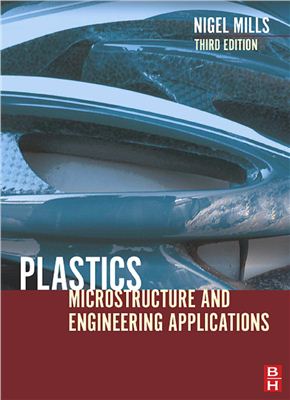3rd ed. - Publisher: Butterworth-Heinemann, 2005. - 529 pages.
Now in its Third Edition, Plastics is the key text for senior students studying the science and engineering of plastic materials. Starting from microstructure and physical properties, the book covers the mechanical, chemical and electrical properties of plastic materials, and also deals in detail with wider plastics issues that todays engineers and materials scientists need such as manufacturing processes and the design of plastic products.
The new edition has been updated to reflect changes in polymer technology and the plastics industry, and the increased knowledge of the mechanical properties of plastics. A new first chapter introduces plastics properties through practical exercises, to help students to see the relevance of more academic chapters. Computer modeling has revealed the mechanics of many types of composites, so the emphasis of chapter 4 has shifted to modeling. Applications, product design and process technology have moved on; consequently the case studies in chapter 14 were updated.
Now in its Third Edition, Plastics is the key text for senior students studying the science and engineering of plastic materials. Starting from microstructure and physical properties, the book covers the mechanical, chemical and electrical properties of plastic materials, and also deals in detail with wider plastics issues that todays engineers and materials scientists need such as manufacturing processes and the design of plastic products.
The new edition has been updated to reflect changes in polymer technology and the plastics industry, and the increased knowledge of the mechanical properties of plastics. A new first chapter introduces plastics properties through practical exercises, to help students to see the relevance of more academic chapters. Computer modeling has revealed the mechanics of many types of composites, so the emphasis of chapter 4 has shifted to modeling. Applications, product design and process technology have moved on; consequently the case studies in chapter 14 were updated.

